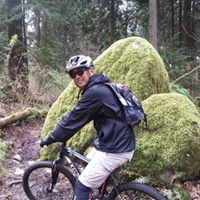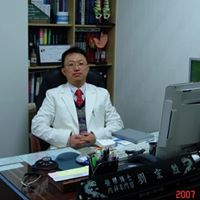Jong Hyun Yoo
age ~55
from West Sacramento, CA
- Also known as:
-
- Jong H Yoo
- Jong Y Kil
- Johg H Yoo
- Jong H Miyeun
Jong Yoo Phones & Addresses
- West Sacramento, CA
- Rocklin, CA
- Roseville, CA
- Dublin, CA
- Milpitas, CA
- Berkeley, CA
- Santa Clara, CA
- San Jose, CA
- San Francisco, CA
Name / Title
Company / Classification
Phones & Addresses
President
Primrose Tailor, Inc
1475 Burlingame Ave, Burlingame, CA 94010
President
INVESTORHIVES.COM, INC
190 Rainbow Pl, Milpitas, CA 95035
Resumes

Chief Executive Officer And President
view sourceLocation:
1458 Highland Dr, West Sacramento, CA 95691
Industry:
Nanotechnology
Work:
Applied Spectra, Inc
Chief Executive Officer and President
Applied Spectra, Inc
Executive Vice President and General Manager
Applied Spectra, Inc Aug 2007 - Oct 2011
Vice President of Technology Development and Marketing
Lawrence Berkeley National Laboratory Apr 2003 - Jun 2008
Visiting Scientist
Applied Spectra, Inc Jun 2004 - Jul 2007
Director of Technology Development and Pi
Chief Executive Officer and President
Applied Spectra, Inc
Executive Vice President and General Manager
Applied Spectra, Inc Aug 2007 - Oct 2011
Vice President of Technology Development and Marketing
Lawrence Berkeley National Laboratory Apr 2003 - Jun 2008
Visiting Scientist
Applied Spectra, Inc Jun 2004 - Jul 2007
Director of Technology Development and Pi
Education:
University of California, Berkeley Aug 1995 - Jun 2000
Doctorates, Doctor of Philosophy, Mechanical Engineering Stanford University Sep 1993 - Jun 1994
Master of Science, Masters, Mechanical Engineering University of California, Berkeley Aug 1990 - May 1993
Bachelors, Bachelor of Science, Mechanical Engineering Uc San Diego
Doctorates, Doctor of Philosophy, Mechanical Engineering Stanford University Sep 1993 - Jun 1994
Master of Science, Masters, Mechanical Engineering University of California, Berkeley Aug 1990 - May 1993
Bachelors, Bachelor of Science, Mechanical Engineering Uc San Diego
Skills:
Materials Science
R&D
Thin Films
Spectroscopy
Semiconductors
Characterization
Nanotechnology
Optics
Physics
Design of Experiments
Chemistry
Metrology
Product Development
Semiconductor Industry
Engineering Management
Materials
Mass Spectrometry
Sensors
Cvd
Mems
Laser
Failure Analysis
Silicon
Experimentation
Ic
Photovoltaics
Management
Cmos
Jmp
Research and Development
Intellectual Property
Solar Energy
Laser Physics
Integrated Circuits
R&D
Thin Films
Spectroscopy
Semiconductors
Characterization
Nanotechnology
Optics
Physics
Design of Experiments
Chemistry
Metrology
Product Development
Semiconductor Industry
Engineering Management
Materials
Mass Spectrometry
Sensors
Cvd
Mems
Laser
Failure Analysis
Silicon
Experimentation
Ic
Photovoltaics
Management
Cmos
Jmp
Research and Development
Intellectual Property
Solar Energy
Laser Physics
Integrated Circuits
Interests:
Golf
Sports
Exercise
Electronics
Sports
Exercise
Electronics
Languages:
English
Korean
Korean

Jong Yoo
view source
Jong Seon Yoo
view sourceUs Patents
-
Pulsed Deposition Process For Tungsten Nucleation
view source -
US Patent:7695563, Apr 13, 2010
-
Filed:Jan 8, 2007
-
Appl. No.:11/621040
-
Inventors:Xinliang Lu - Sunnyvale CA, US
Ping Jian - San Jose CA, US
Jong Hyun Yoo - Milpitas CA, US
Ken Kaung Lai - Milpitas CA, US
Alfred W. Mak - Union City CA, US
Robert L. Jackson - San Jose CA, US
Ming Xi - Milpitas CA, US -
Assignee:Applied Materials, Inc. - Santa Clara CA
-
International Classification:C30B 25/14
-
US Classification:117 89, 117 86, 117 90, 117 92
-
Abstract:In one embodiment, a method for depositing a tungsten material on a substrate within a process chamber is provided which includes exposing the substrate to a gaseous mixture containing a tungsten precursor and a reducing gas to deposit a tungsten nucleation layer on the substrate during a tungsten deposition process. The process further includes removing reaction by-products generated during the tungsten deposition process from the process chamber, exposing the substrate to the reducing gas to react with residual tungsten precursor within the process chamber during a soak process, removing reaction by-products generated during the soak process from the process chamber, and repeating the tungsten deposition process and the soak process during a cyclic deposition process. In the examples, the reducing gas may contain diborane or silane.
-
Laser Ablation Apparatus And Method
view source -
US Patent:8199321, Jun 12, 2012
-
Filed:May 5, 2009
-
Appl. No.:12/435970
-
Inventors:Jong Hyun Yoo - Milpitas CA, US
Randolph S. Tribe - San Jose CA, US
Chunyi Liu - Union City CA, US -
Assignee:Applied Spectra, Inc. - Fremont CA
-
International Classification:G01J 3/443
G01N 21/63 -
US Classification:356318, 356326, 356 72
-
Abstract:Provided is a laser ablation spectroscopy apparatus and method. A pulse laser is focused on the sample site to generate a plasma plume during a laser ablation process. The plasma plume is detected with a spectrometer and an intensified charge coupled device. A sample of material is coupled to a stage movable in the x, y and z directions using an array of x-y-z motors. A change in the height of the sample is detected using a triangulation sensor. The apparatus includes a system computer for synchronizing the movement of the stage in the x, y and z direction during the laser ablation process. The method includes a protocol of generating one or more laser ablations per sample site. The spectral data of the total number of laser ablations for each sample site are averaged together. The protocol includes laser ablating additional sample sites and averaging the spectral data of the total number of sample sites.
-
Pulse Nucleation Enhanced Nucleation Technique For Improved Step Coverage And Better Gap Fill For Wcvd Process
view source -
US Patent:20070009658, Jan 11, 2007
-
Filed:Dec 17, 2001
-
Appl. No.:10/023125
-
Inventors:Jong Yoo - Milpitas CA, US
Xinliang Lu - Sunnyvale CA, US
Chiliang Chen - Sunnyvale CA, US
Ken Lai - Milpitas CA, US -
International Classification:C23C 16/00
-
US Classification:427248100, 118715000, 118697000
-
Abstract:A process and an apparatus is disclosed for forming refractory metal layers employing pulse nucleation to minimize formation of a concentration boundary layer during nucleation. The surface of a substrate is nucleated in several steps. Following each nucleation step is a removal step in which all reactants and by-products of the nucleation process are removed from the processing chamber. Removal may be done by either rapidly evacuating the processing chamber, rapidly introducing a purge gas therein or both. After removal of the process gas and by-products from the processing chamber, additional nucleation steps may be commenced to obtain a nucleation layer of desired thickness. After formation of the nucleation layer, a layer is formed adjacent to the nucleation layer using standard bulk deposition techniques.
-
Method For Real-Time Optical Diagnostics In Laser Ablation And Laser Processing Of Layered And Structured Materials
view source -
US Patent:20110100967, May 5, 2011
-
Filed:Nov 3, 2010
-
Appl. No.:12/939095
-
Inventors:Jong Hyun Yoo - Milpitas CA, US
-
Assignee:APPLIED SPECTRA, INC. - Fremont CA
-
International Classification:B23K 26/02
B23K 26/06 -
US Classification:21912173, 21912183
-
Abstract:A method for real-time optical diagnostics in laser ablation and laser processing of layered or structured materials or material structures. Diagnostics is provided during laser ablation that is utilized regularly in laser processing and/or chemical analysis of structured materials, by means of measuring optical emission generated as a result of the pulsed laser-material interaction in real time. The method can involve a single-layer-film or a stack of multiple layers or a structure of different domains. The method is particularly beneficial in fabrication of thin-film structures, such as photovoltaic and electronic devices or circuits of devices.
-
High-Resolution Laser Induced Breakdown Spectroscopy Devices And Methods
view source -
US Patent:20120206722, Aug 16, 2012
-
Filed:Jun 7, 2011
-
Appl. No.:13/155207
-
Inventors:Costas P. Grigoropoulos - Berkeley CA, US
David Jen Hwang - Albany CA, US
Jong Hyun Yoo - Milpitas CA, US
Richard E. Russo - Walnut Creek CA, US -
International Classification:G01J 3/30
-
US Classification:356318
-
Abstract:Provided are laser induced breakdown spectroscopy (LIBS) devices. Embodiments of the devices are configured to obtain a spatial resolution of 10 μm or less. Also provided are methods of using the subject LIBS devices to determine whether one or more elements of interest are present in a target sample. The devices and methods find use in a variety of applications, e.g., submicron and nanoscale chemical analysis applications.
-
Pulsed Nucleation Deposition Of Tungsten Layers
view source -
US Patent:7211144, May 1, 2007
-
Filed:Jul 12, 2002
-
Appl. No.:10/194629
-
Inventors:Xinliang Lu - Sunnyvale CA, US
Ping Jian - San Jose CA, US
Jong Hyun Yoo - Milpitas CA, US
Ken Kaung Lai - Milpitas CA, US
Alfred W. Mak - Union City CA, US
Robert L. Jackson - San Jose CA, US
Ming Xi - Milpitas CA, US -
Assignee:Applied Materials, Inc. - Santa Clara CA
-
International Classification:C30B 25/16
-
US Classification:117101, 117 85, 117 86, 117 89, 117102, 117105
-
Abstract:A method of forming a tungsten nucleation layer using a sequential deposition process. The tungsten nucleation layer is formed by reacting pulses of a tungsten-containing precursor and a reducing gas in a process chamber to deposit tungsten on the substrate. Thereafter, reaction by-products generated from the tungsten deposition are removed from the process chamber. After the reaction by-products are removed from the process chamber, a flow of the reducing gas is provided to the process chamber to react with residual tungsten-containing precursor remaining therein. Such a deposition process forms tungsten nucleation layers having good step coverage. The sequential deposition process of reacting pulses of the tungsten-containing precursor and the reducing gas, removing reaction by-products, and than providing a flow of the reducing gas to the process chamber may be repeated until a desired thickness for the tungsten nucleation layer is formed.
-
Laser Ablation Analysis
view source -
US Patent:20210341392, Nov 4, 2021
-
Filed:Jul 2, 2021
-
Appl. No.:17/366023
-
Inventors:- West Sacramento CA, US
Chunyi Liu - Fremont CA, US
Jong Hyun Yoo - Sacramento CA, US
Sudeep J. Pandey - Sacramento CA, US
Richard E. Russo - Walnut Creek CA, US
Randolph S. Tribe - San Jose CA, US -
Assignee:Applied Spectra, Inc. - West Sacramento CA
-
International Classification:G01N 21/71
H01J 49/00
B23K 26/04
H01J 49/10
H01J 49/04 -
Abstract:Methods for laser induced ablation spectroscopy (LIBS) are disclosed. Light from laser ablation can be gathered into a lightguide fiber bundle that is subdivided into branches. One branch can convey a first portion of the light to a broadband spectrometer operable to analyze a relatively wide spectral segment, and a different branch can convey a second portion of the light to a high dispersion spectrometer operable to measure minor concentrations and/or trace elements. Emissions can be analyzed using a plurality of spectrometers having distinct and/or complementary capabilities, and with a synergistic method using inductively coupled plasma mass spectrometry.
-
Method For Elemental Analysis Of A Snack Food Product In A Dynamic Production Line
view source -
US Patent:20160091434, Mar 31, 2016
-
Filed:Sep 25, 2015
-
Appl. No.:14/865413
-
Inventors:- Plano TX, US
- Fremont CA, US
Scotty G. Richardson - Gainesville TX, US
Richard E. Russo - Walnut Creek CA, US
Chen C. Shao - Plano TX, US
Jong Hyun Yoo - Dublin CA, US
Chunyi Liu - Fremont CA, US -
International Classification:G01N 21/84
G01N 21/71 -
Abstract:A method and apparatus for analyzing one or more elements of targeted moving snack food surfaces uses laser-induced breakdown spectroscopy to detect the presence, absence, or amount of an element on a heterogeneous surface, including seasoned and ready-to-eat snack foods. A laser is used to quantify the element concentration without destroying the targeted sample. An automated on-line system may be integrated into the method to create a closed-loop feedback control system, adjusting the concentration as desired.
Classmates

Jong Yoo
view sourceSchools:
Franklin Elementary School Los Angeles CA 1994-1995
Community:
Robert Mcclure, Peter Arbogast

Jong Yoo
view sourceSchools:
Kauluwela Elementary School Honolulu HI 1989-1990, Westwood Elementary School Houston TX 1990-1995, Spring Oaks Middle School Houston TX 1995-1998
Community:
Kathleen Shirley

Jong Yoo
view sourceSchools:
South Knoll Elementary School College Station TX 1987-1991
Community:
Sean Heath, Lori Thatcher, Casey Bohne, Isaac Mirza, Matt Moore, Claudia Pantin, Tina Hu, Randy Janis

Franklin Elementary Schoo...
view sourceGraduates:
Louis Garcia (1991-1998),
Jong Yoo (1994-1995),
Albert Hartfeld (1982-1987),
Nick von Hellens (1976-1983)
Jong Yoo (1994-1995),
Albert Hartfeld (1982-1987),
Nick von Hellens (1976-1983)

Kauluwela Elementary Scho...
view sourceGraduates:
Michelle Rogers (1974-1981),
Jong Yoo (1989-1990),
Robyn Pacheco (1979-1985),
Valerie Goo (1982-1988)
Jong Yoo (1989-1990),
Robyn Pacheco (1979-1985),
Valerie Goo (1982-1988)

South Knoll Elementary Sc...
view sourceGraduates:
Gina Vick (1985-1990),
Jong Yoo (1987-1991),
Marissa Garcia (1992-1996),
Donald Walsh (1967-1969),
Jose Loyo (1980-1984)
Jong Yoo (1987-1991),
Marissa Garcia (1992-1996),
Donald Walsh (1967-1969),
Jose Loyo (1980-1984)

Westwood Elementary Schoo...
view sourceGraduates:
Connie Hoelscher (1966-1970),
Jong Yoo (1990-1995),
Gina Mccurley (1974-1980)
Jong Yoo (1990-1995),
Gina Mccurley (1974-1980)

Spring Oaks Middle School...
view sourceGraduates:
David Dinh (1996-1999),
Kris Fortuno (1997-1998),
Melanie Berger (1987-1990),
Jong Yoo (1995-1998),
Darrin Straughan (1973-1975),
Julio Palacios (1993-1996)
Kris Fortuno (1997-1998),
Melanie Berger (1987-1990),
Jong Yoo (1995-1998),
Darrin Straughan (1973-1975),
Julio Palacios (1993-1996)
Googleplus

Jong Yoo

Jong Yoo

Jong Yoo
Other Social Networks
Flickr

Jong Lhabzs Yoo
view source
Jong Heon Yoo
view source
Jong Hyuk Yoo
view source
Jong Hoon Yoo
view source
Jong Won Yoo
view source
Jong Yoo
view sourceYoutube
Myspace
Get Report for Jong Hyun Yoo from West Sacramento, CA, age ~55














